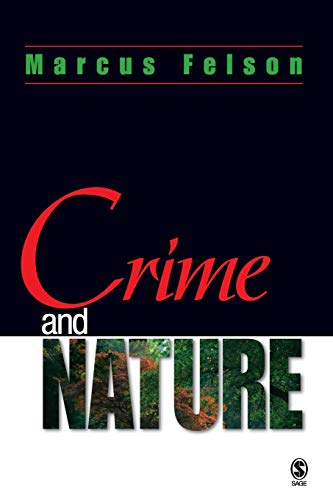Crime and Nature
Marcus Felson is the originator of the routine activity approach and of Crime and Everyday Life. He has also authored Crime and Nature, and serves as professor at Texas State University in San Marcos, Texas. He has a B.A. from University of Chicago, an M.A. and Ph.D. from the University of Michigan, and has received the 2014 Honoris Causa from the Universidad Miguel Hernandez in Spain. Professor Felson has been given the Ronald Clarke Award by the Environmental Criminology and Crime Analysis group, and the Paul Tappan Award of the Western Society of Criminology. He has been a guest lecturer in Argentina, Australia, Belgium, Brazil, Canada, Chile, China, Denmark, Ecuador, El Salvador, England, Estonia, Finland, France, Germany, Hong Kong, Hungary, Italy, Japan, Mexico, the Netherlands, New Zealand, Norway, Poland, Scotland, Spain, South Africa, Sweden, and Switzerland. He has applied routine activity thinking to many topics, including theft, violence, child molestation, white-collar crime, and corruption. ... Read more Read less
Crime has its own ecosystem. Marcus Felson's innovative new text shows how modern society can reduce this ecosystem and limit its biodiversity. Providing students with a system for thinking about crime, Crime and Nature shows clearly how crime draws from the larger ecosystem - how offenders forage for targets and how they depend on one another. Marcus Felson considers how crime feeds off legal activities and shows how crime ecology can help shut off crime opportunities and reduce crime in local areas. With a wealth of examples illustrating the concepts discussed, and the author's clear, enjoyable writing style and willingness to take sometimes controversial stances, this textbook keeps students engaged in this original work. It is accessible for readers at any leve andl delves well beyond introductory materials. It is a timely addition to the 'crime science' literature and is an innovative resource for students and criminologists alike. Pedagogical features, including summaries, cogent exercises and well-chosen charts and tables, make this an excellent text for courses such as Introduction to Criminology, Sociology of Law, Crime and Biology, Social Problems, Crime Theory and Crime Control and Prevention. ... Read more Read less











